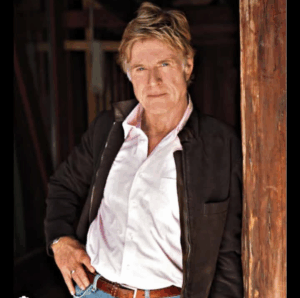Robert Frost Biography: The Voice of Rural America and the Poet of Modern Realism
Who is Robert Frost?
Today let’s talk about Robert Frost Biography: In the realm of English and American poetry, few names command as much admiration and influence as Robert Frost. Known for his deceptively simple verses that carry profound truths about human nature, life, and the changing world, Frost’s work transcends generations. He was not merely a poet of the countryside but a philosopher of the human condition, wrapping complexity in the simplicity of everyday rural scenes.
Robert Frost’s poetry continues to echo through classrooms, literature anthologies, and hearts across the world. From “The Road Not Taken” to “Stopping by Woods on a Snowy Evening,” his words reflect solitude, struggle, and the delicate relationship between man and nature. Yet behind those serene images of snow-covered woods and stone fences lies a life filled with both triumph and tragedy, a story that shaped one of the greatest poets of the 20th century.
Robert Frost Biography
Robert Frost Early Life and Family Background
Robert Lee Frost was born on March 26, 1874, in San Francisco, California, USA. His father, William Prescott Frost Jr., was a journalist and teacher originally from New Hampshire, while his mother, Isabelle Moodie, was a Scottish immigrant from Edinburgh. His father was known for his ambitious but temperamental personality and worked as a newspaper editor. Frost’s early years were shaped by his father’s political enthusiasm and his mother’s strict Scottish spirituality.
Tragedy struck early in Frost’s life. When Robert was just eleven years old, his father died of tuberculosis, leaving the family in financial distress. Following his father’s death, Frost, his mother, and his younger sister Jeanie moved from California to Lawrence, Massachusetts, to live with his paternal grandparents. It was a drastic change—from the sunny and liberal atmosphere of the West Coast to the puritanical and conservative environment of New England, a region that would later dominate the imagery of his poetry.

Robert Frost Education and the Birth of a Poet
Robert Frost attended Lawrence High School, where he excelled in academics and showed an early aptitude for language. He shared the title of class valedictorian with Elinor Miriam White, a brilliant young woman who would later become his wife and lifelong muse.
In 1892, after graduating, Frost enrolled at Dartmouth College but stayed for less than a semester. The academic environment, while stimulating, did not suit his temperament. He preferred independent learning and found himself drawn to the rhythms of nature and the common speech of rural people. After leaving Dartmouth, he returned home and took up several odd jobs, teaching, delivering newspapers, and working in a textile mill, while quietly nurturing his passion for poetry.
In 1894, at the age of 20, Frost sold his first poem, “My Butterfly: An Elegy,” to The Independent magazine for fifteen dollars. The publication marked his first recognition as a poet and gave him a glimpse of the path he would follow for the rest of his life. Encouraged, he privately printed a small collection of poems dedicated to Elinor White and proposed marriage to her. However, Elinor, then still in college, refused, she wanted to complete her studies first. Heartbroken, Frost left for Virginia but returned a year later, and the two finally married in 1895.
Robert Frost Struggles and Persistence
After marriage, Frost’s life was filled with challenges. He and Elinor settled on a farm in Derry, New Hampshire, given to them by his grandfather. For the next ten years, Frost worked as a poultry farmer while writing poems in his spare time. The life of a farmer was difficult, and money was often scarce. The experience, however, deeply influenced his writing. It was here that Frost developed his keen eye for rural detail, crafting vivid scenes of fields, fences, seasons, and farm life that would later define his poetry.
During those years, Frost wrote many of his most beloved poems but faced repeated rejections from publishers. His manuscripts were often returned unread, and editors failed to appreciate his plainspoken style. Discouraged yet determined, Frost continued to write, refining his craft and listening to the cadences of everyday speech around him. He once remarked that poetry should sound like “talking,” not preaching—and that belief became a cornerstone of his poetic identity.
In 1912, at the age of 38, Frost made a bold decision. Tired of rejection in America, he sold his farm and moved with his family to England, hoping to find better opportunities in the literary world. That single decision changed his destiny.
Robert Frost Breakthrough in England
England proved to be the turning point in Frost’s career. Within a few years, he found himself surrounded by a circle of talented writers and intellectuals who recognized his genius. He befriended Ezra Pound, Edward Thomas, and other poets of the Georgian movement. They admired his fresh, naturalistic approach to poetry, rooted in American landscapes yet universal in its themes.
In 1913, Frost published his first full collection of poems, “A Boy’s Will,” followed by “North of Boston” in 1914. These collections introduced readers to his distinctive voice, one that captured the rhythms of rural speech and the psychological complexities of everyday people.
Critics in England hailed him as an original talent, and American publishers soon took notice. When Frost returned to the United States in 1915, he was no longer an unknown poet struggling on a New Hampshire farm, he was a rising literary star.
Robert Frost Fame, Family, and Tragedy
After his return to America, Frost bought another farm, this time in Franconia, New Hampshire, where he continued to write and teach. He became a lecturer at Amherst College, Harvard University, and Middlebury College, where his summer teaching sessions became legendary.
However, despite his growing fame, Frost’s personal life was marked by deep sorrow. He and Elinor had six children, but tragedy struck repeatedly, two of them died young, and another, his son Carol, committed suicide. His wife Elinor also passed away in 1938 after years of illness. These painful experiences left profound scars on Frost’s heart, shaping much of his later poetry with undertones of melancholy and introspection.
Yet, Frost remained resilient. He continued to write, turning personal grief into timeless verse. His poems from this period—such as “Fire and Ice,” “Acquainted with the Night,” and “Home Burial”, reveal a man grappling with loss, faith, and the existential questions of life.
Themes and Style
What makes Robert Frost’s poetry timeless is his mastery of simplicity and depth. His language is clear and conversational, yet beneath its surface lies immense philosophical weight. Nature is his constant companion—not as an object of mere beauty but as a mirror reflecting human emotion and moral struggle.
In poems like “The Road Not Taken,” Frost explores the choices that shape our lives. In “Mending Wall,” he examines human boundaries and traditions. “Birches” captures nostalgia and the yearning for escape, while “Stopping by Woods on a Snowy Evening” embodies the eternal tension between rest and responsibility.
Frost’s poetic technique—his use of traditional meter combined with conversational tone—broke new ground in modern poetry. While other poets of his time experimented with free verse and abstraction, Frost remained loyal to structure, proving that modern thought could live within classical form.
Robert Frost Recognition and Legacy
Frost’s achievements are among the greatest in American literary history. He won the Pulitzer Prize for Poetry four times—an unprecedented record—for the collections New Hampshire (1924), Collected Poems (1931), A Further Range (1937), and A Witness Tree (1943). He also received numerous honorary degrees and became a cultural icon, admired by presidents, students, and everyday readers alike.
In 1961, at the age of 86, Robert Frost was invited to read at the inauguration of President John F. Kennedy, a rare honor for a poet. Standing before the world, he read his poem “The Gift Outright”, a patriotic reflection on America’s identity and destiny. Though the sunlight that day made it difficult for him to read a newly written poem, his voice, firm and dignified, captured the nation’s heart.
Throughout his life, Frost represented the best of American values: hard work, independence, reflection, and courage in the face of adversity. He was not only a poet but also a teacher and mentor, guiding generations of young writers at the Bread Loaf Writers’ Conference in Vermont.
The Later Years and Death
In his final years, Frost continued to write, lecture, and travel, despite declining health. He remained intellectually active, his wit sharp and his curiosity undiminished. His poetry continued to appear in major journals, and collections of his earlier works were reprinted repeatedly.
Robert Frost died on January 29, 1963, in Boston, Massachusetts, at the age of 88. He was buried in the Old Bennington Cemetery in Vermont, beside his beloved wife Elinor. His gravestone bears the simple yet profound inscription:
“I had a lover’s quarrel with the world.”
Those words, from his poem “The Lesson for Today,” perfectly encapsulate the spirit of a man who loved life despite its imperfections, who questioned without bitterness, and who found beauty even in solitude and struggle.
The Enduring Influence of Robert Frost
Robert Frost’s poetry continues to inspire writers, readers, and thinkers around the world. His words are taught in classrooms from New York to Nairobi, reminding us that poetry need not be distant or obscure, it can grow out of the soil we walk on every day.
His depiction of rural life serves as both literal and metaphorical. The fences, fields, and woods of New England symbolize not just nature, but the boundaries and choices of human existence. His verses teach us that even the simplest actions, walking a path, mending a wall, or pausing in the snow, can reveal deep truths about the human soul.
Frost’s legacy endures not because of lofty abstraction, but because of his intimacy with life’s ordinary details. He found greatness in simplicity, eternity in the fleeting, and poetry in the heartbeat of conversation.

Frequently Asked Questions about Robert Frost
Who was Robert Frost?
Robert Frost was an American poet widely regarded as one of the greatest literary figures of the 20th century. Known for his portrayal of rural New England life, he used simple language and traditional poetic forms to explore complex themes of nature, humanity, and existence.
What are Robert Frost’s most famous works?
Some of Frost’s most celebrated poems include The Road Not Taken, Stopping by Woods on a Snowy Evening, Mending Wall, Birches, and Fire and Ice. These works remain among the most quoted and studied poems in English literature.
How many Pulitzer Prizes did Robert Frost win?
Robert Frost won the Pulitzer Prize for Poetry four times, a record unmatched by any other American poet. His award-winning collections include New Hampshire, Collected Poems, A Further Range, and A Witness Tree.
What themes did Robert Frost explore in his poetry?
Frost’s poetry delved into themes such as nature, isolation, human choices, rural life, mortality, and the conflict between desire and duty. Beneath his pastoral imagery lies a profound philosophical inquiry into life’s complexities.
Why is Robert Frost considered important in literature?
Frost’s significance lies in his ability to balance traditional poetic form with modern insight. His accessible style brought poetry to everyday people, while his profound themes influenced generations of poets, thinkers, and educators worldwide.
Conclusion
Robert Frost’s life and art reflect the timeless struggle between simplicity and depth, between the outer world of nature and the inner landscape of the human heart. He began as a farmer-poet, toiling in obscurity, and rose to become the poetic conscience of America. Through his mastery of rhythm, imagery, and language, he gave voice to the silent beauty of rural life and the unspoken truths of the human spirit.
Even today, his words guide us through the crossroads of life, reminding us that each path, each wall, each snowy evening carries meaning beyond the visible. His poetry stands as a testament to endurance, reflection, and the eternal beauty of thought expressed through words.
Robert Frost did not merely write about nature—he wrote about life itself. His verses invite us to pause, reflect, and find poetry in our own journeys. And like the traveler in The Road Not Taken, we too must choose our paths—and know, as Frost did, that those choices make all the difference.
